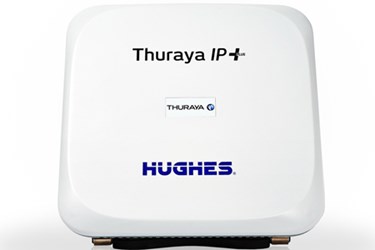Can The Internet Of Things (IoT) Survive Without Satellite?

By Randy C. Roberts, Vice President of Innovation
Satellite technology has a pivotal role in driving the growth momentum behind the Internet of Things (IoT) and unlocking the promise of interconnected devices.
The nascent IoT movement promises to drive the relentless shift towards the interconnected network of devices. According to research firm Gartner, the growth in IoT will far exceed that of other connected devices and will grow to 26 billion units by 2020, representing an almost 30-fold increase from 2009.
Besides the proliferation of connected devices, the continued adoption of machine-to-machine (M2M) technology will spur the development of a wide range of new consumer-centric services or even facilitate new business models.
Transforming IoT Connectivity Via Satellite
Satellite technology serves as a key enabler for these new services — across industries and geographical borders — to transform IoT connectivity as we know it today. In highly varied applications that range from consumer-based services, to oil and gas, to the transportation sector, satellite operators can deliver strategic advantages over terrestrial deployments in the following aspects:
Connecting remote assets - Business operations that extend to geographically remote environments depend on satellites to provide the critical communication means to conduct remote facility monitoring and real-time asset management at unmanned sites and offshore platforms.
Driving the use of sensor networks - Energy and mining companies are starting to explore more extensive usage of satellite-based sensor networks to support their offshore exploration projects.
Transforming transportation infrastructure - Broadband connectivity on trains, cargo vehicles, and maritime vessels is a burgeoning trend across the global transportation landscape, and satellite communications is key to enabling the next generation of mobility services.
Developing sustainable cities - City administrators around the world are harnessing the power of the IoT to drive energy efficiency and smarter resource allocation to help make cities more sustainable. Satellite services can facilitate the deployment of smart grids in remote regions where terrestrial networks fall short and act as a reliable backup network for critical services such as safety and security.
Connected Cars - Many car manufacturers are providing safety features in their vehicles including emergency calling and airbag deployment notifications. Guaranteeing the availability of these services can only be achieved with coverage in remote areas around the world.
Collecting fitness data - Athletes wear small sensors for location tracking purposes and to collect bio-data such as their heart rate, blood pressure and oxygen levels. The data collected can be used to track potential health risks, monitor progress in training, or identify the location of athletes in remote areas.
Facilitating mobile banking and retail - Satellite can serve as the main communications backbone that keeps wireless ATMs and mobile point-of-sales applications running smoothly across a broad geographical span.
Unlocking the Future of the IoT
The basic requirement of the IoT is that all devices need to be connected wherever they happen to be.
While Wi-Fi deployments, Bluetooth, and terrestrial GSM networks are able to support most applications, these network services simply cannot provide the ubiquitous and seamless coverage of satellites. The ultimate success of the IoT will depend on the active support of satellite networks, such as the L-band services provided by Thuraya, to address the following requirements:
Coverage - A new breed of IoT applications will emerge from the connectivity of intelligent devices. Expected to encompass billions of devices around the world, the potential scale of the IoT demands ubiquitous network coverage even in remote locations, which are best served by satellite networks.
Reliability - Maintaining a high level of service reliability is a key requirement for effective IoT deployments. The low latency of L-band services holds a distinct advantage in catering to applications such as remote asset monitoring that requires reliable, always-on connectivity.
Speed - The future landscape of the IoT involves the exchange of data between interconnected objects to facilitate quicker decision making and enhance business processes. These developments have, in turn, driven up the demand for high data speeds to support bandwidth-intensive applications in real time.
Cost - Satellite technology has the potential to be a versatile and cost-effective solution to address IoT connectivity needs. The costs associated with mobile satellite services, for instance, are highly competitive with terrestrial networks, and is considered a more affordable option relative to other satellite platforms.
Integration - The IoT is expected to continue driving up market demand for the integration of satellite into the overall communications mix.
To realize its full potential, the IoT cannot survive without the support and engagement of satellite operators. Thuraya is currently working with an ecosystem of developers and system integrators to provide the necessary devices, applications and integration support to make the IoT a success.
 Randy C. Roberts
Randy C. Roberts
Vice President of Innovation
Randy Roberts is responsible for driving product and solution innovation strategy. Based in Dubai, Randy leads the product development, product management and solutions engineering teams. He is also responsible for managing the business intelligence team to drive continuous development and enhancement of Thuraya’s product lifecycle management process.
